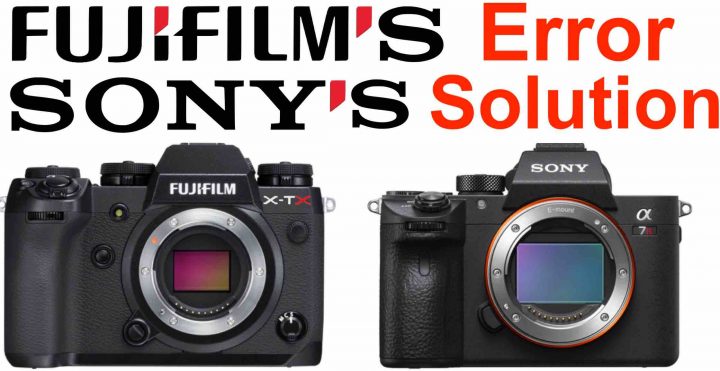The Error Fujifilm is Doing (and Sony Not)

Fujifilm vs Sony
Weekend thoughts.
There are a lot of differences between Fujifilm and Sony, and I believe each company could learn some things something from each other.
But today I’d like to focus on one aspect, that I believe Sony and other brand are doing right, and Fujifilm should copy.
Let’s talk about it.
Sony basically uses the same, unchanged design and ergonomics for all cameras (with minor tweaks over the years). What changes, is the sensor inside:
- A7S – low resolution: good for video and low light photography
- A7 – medium resolution: allrounder camera (or “sweet spot” camera)
- A7r – high resolution camera line: higher image quality (but more expensive)
- A9 – stacked sensor: for sports and wildlife
- etc…
And so far Fujifilm went the opposite way.
They use the same sensor for all new cameras (currently 26MP, the next generation will be 40 megapixel), but they do not regurgitate the same mainstream form factor over and over again and “force” photographers to adapt to that specific photographic experience.
Fujifilm plays around with the form factor, in order to deliver such a variety of camera bodies, that it will be easier for photographers to find that one camera, that suits his/her photographic, artistic and creative needs best.
However, what Fujifilm does is not really cost efficient. It would be much cheaper to pick one design, and keep that one over and over again (a la Sony).
The fact that only Fuji does offer different body designs, is also testimony of that huge photographic culture Fujifilm carries in its DNA. And it’s the reason why Fuji cameras are fun to shoot with.
But the market dictates the rules, and if you want to stay in the business, you have to listen to it.
And if Sony’s and Canon’s success tells us something, then it’s that offering different type of sensors in a variety of new camera models is well received by the market.
Hence, I feel that there is need of product differentiation not only in terms of ergonomics, but also in terms of sensors.
So how could it look like?
Well, I made a list of possible cameras below, taking as a base the X-T body design (NOTE: not rumored cameras, they just serve as an example on how Fujifilm could differentiate its cameras even further.)
- Fujifilm X-T5 with around 28 megapixel: no expensive stacked sensor, more affordable, and still fast sensor readout due to “only” 28 megapixel on APS-C sensor
- Fujifilm X-T5R with around 40 megapixel (non stacked): more expensive but not stacked to avoid to make it overly expensive. A bit slower sensor readout than the 28 mp version
- Fujifilm X-T5S with around 40 megapixel (stacked): stacked sensor for super fast sensor readout while keeping high megapixel count. Most expensive option
So yes, I believe Fujifilm should stop to pick one sensor only, and use that one for all cameras, but mix up things a bit, use different sensors in the same camera body. That would offer to Fujifilm X shooters the ultimate flexibility.
Is this something Fujifilm will do with the Fujifilm X-H2, which will come in 2 variants as FujiRumors readers know already?
Honestly, I don’t know. It could well be the same sensor in different form factors (one more video oriented with external fan, selfie screen etc, and one more stills oriented with 3 way tilt screen and more compact sized). What we know is that at the recent Fujifilm X summit Fujifilm teased one (1) new sensor coming, not two.
I will investigate and let you know as soon as I can.
Until then, I’d love to hear from you what you think. Feel free to vote the survey down below and to comment.

